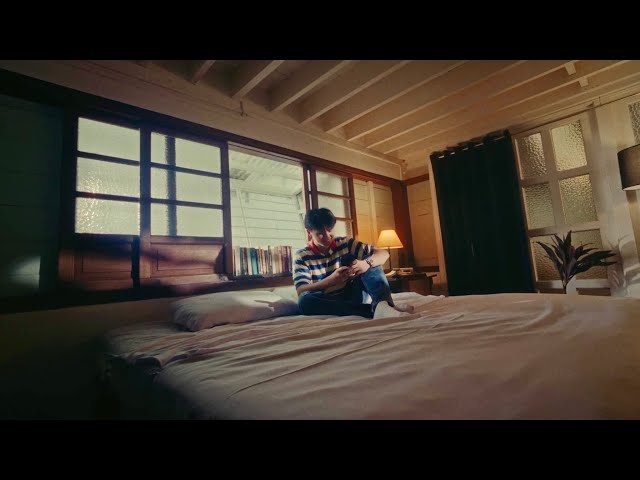MANILA, Philippines – Cebuano singer-songwriter Shoti’s hit song “LDR” — and all its versions — has already found its way into the playlists of people all over the world. If somebody isn’t singing along to it, they’re probably dancing to it instead.
@jaredalmendras Happy maders day#teamalmendras #abellana ♬ Ldr sped up – jædee
The love song has birthed several dance challenges since its 2022 release. Just when you think “LDR” has run its course, the internet manages to revive it with a different trend. Its sped-up version has gone mega-viral for its 15-second dance challenge, and later on, the humorous “pogi, sige na (come on, handsome)” skit where people macho dance to the song in its original tempo.
@realexotichandsome Dancing Pogi Sige na in Super Market #exotichandsome #mangthorney #pogisigena ♬ LDR – Shoti
The story behind “LDR” is pretty straightforward. Shoti, whose real name is Jared Almendras, was in a long distance relationship, and he wanted to express his romantic woes in the way he knew best: through music. The song’s inception was almost instant. Its iconic chorus – led with the line “You’re always on my mind, that’s how much I care” – emerged naturally for Shoti.
It would later take the then-15-year-old by surprise when the song became a huge success.
“I did not expect anything at all. I was 15 years old just making songs in my bedroom. Who would’ve thought that I’d be performing around the Philippines? It’s crazy,” Shoti shared, adding that it was his friend who had created the viral choreography for “LDR,” which millions of TikTok users began dancing to as well.
But there’s more to Shoti than just “LDR.” In this exclusive interview with Rappler, the Cebuano artist shares how he forged his own path in music, as well as the story behind his latest release, “Night and Day.”
Shoti’s roots
Shoti’s parents are former DJs so everyone could already guess that he, too, would develop an affinity for music. He loved to sing since he was a child, but most of his performances never really went beyond his mom’s YouTube channel.
Years later, fueled by boredom, Shoti found himself learning how to make beats to eventually sell them. When this didn’t work out, he bought a microphone to try his hand at streaming instead. When that plan didn’t come to fruition either, fate brought Shoti back to his love for music.
“I was like, ‘I have a microphone now [and] I know how to make beats, what if I try making a song?’ My first song is on Spotify, ‘In Love Kaayo,’ and after that, the rest followed,” he shared.
Hs parents were just as surprised as the next person when they learned that Shoti had taught himself how to make beats, all the more so when he showed them the first-ever song he had whipped up all by himself.
Shoti now has a total of seven singles under his belt, each of them possessing a rather glaring quality: they’re all sung in a mix of Bisaya and English.
“I don’t know why, but when I sing in Bisaya, it feels like it’s from the heart. It just feels more intimate when it’s Bisaya. I wanted to be different also. I wanted to be unique, not just like other artists na straight English lang or straight Bisaya. I wanted to combine both,” Shoti replied when asked why he decided to use both languages in his songs.
“That’s probably why also it went really viral because a lot of Cebuanos [and] other Bisayas thought it was just an English song because it was just the chorus that was going viral. And when they found out it was Bisaya, they were so proud…. I’m always gonna be putting Bisaya and English together in all my songs,” he added.
True enough, when he performed at a gig in Manila this year, he was shocked to hear the crowd sing the Bisaya lyrics along with him.
“I can’t even speak Tagalog really well. For them to sing the Bisaya part to me is like, wow,” he expressed.
It’s apparent, then, that more than getting to share his artistry, Shoti’s platform also enables him to spotlight his Bisaya roots to people all over the Philippines and the world.
On continuing to pursue music
But Shoti is just getting started.
Just recently, he released his newest single, “Night and Day,” which also marks the first time he used an acoustic guitar in any of his songs. What sticks out most about the emotional track, however, is why and how it was written in the first place.

“I was talking to this girl, and I was like, ‘Okay, she’s special to me, I’m gonna write her a song.’ And then midway through, [when] I finished half of it, we stopped talking. I didn’t know what to do anymore. I wasn’t inspired na (anymore). It took so long to finish,” he admitted.
The young singer then had to rely on his imagination to finish the rest of the song, essentially making it an anthem of “what could have been.”
On a broader note, as Shoti progresses further into his career, all that matters to him is getting to do what he loves: making music. He isn’t letting the pressure of keeping up with the success of “LDR” get to him — wholeheartedly believing that as long as he’s able to inspire others to make music as well, then everything’s going to be fine.
With that, Shoti has one piece of advice for those who are just beginning to find their groove: “Don’t be afraid to step out of your box because you never really know how beautiful it is outside.” – Rappler.com

